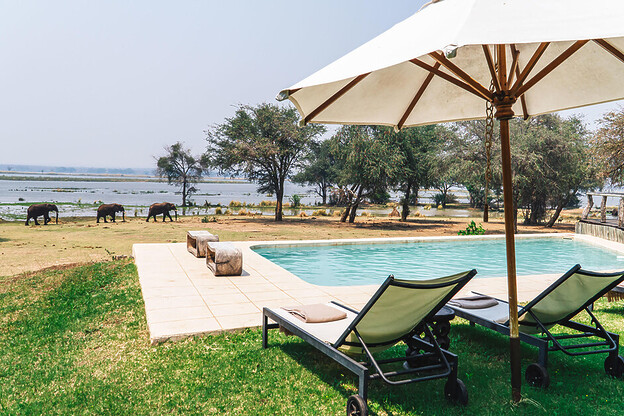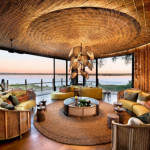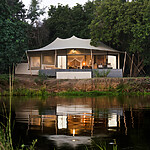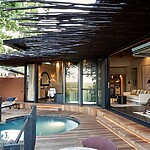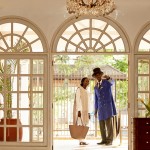Sarah Kingdom visits Dulini Anabezi and discovers a quietly elegant camp in Zambia’s Lower Zambezi National Park.
Our journey to Zambia’s Lower Zambezi National Park, one of Africa’s top game viewing destinations, began with a light aircraft flight from Lusaka. Crossing the Zambezi escarpment, we traced the Zambezi River as it wound its way between the escarpment and the floodplain, before we came in to land on a bumpy dirt airstrip.
From here, the drive to Dulini Anabezi revealed what makes this part of Zambia so special – a landscape defined by the Zambezi River, where elephants wade through channels, leopards prowl, fish eagles call, and hippos surface in with a gurgle and a splash.
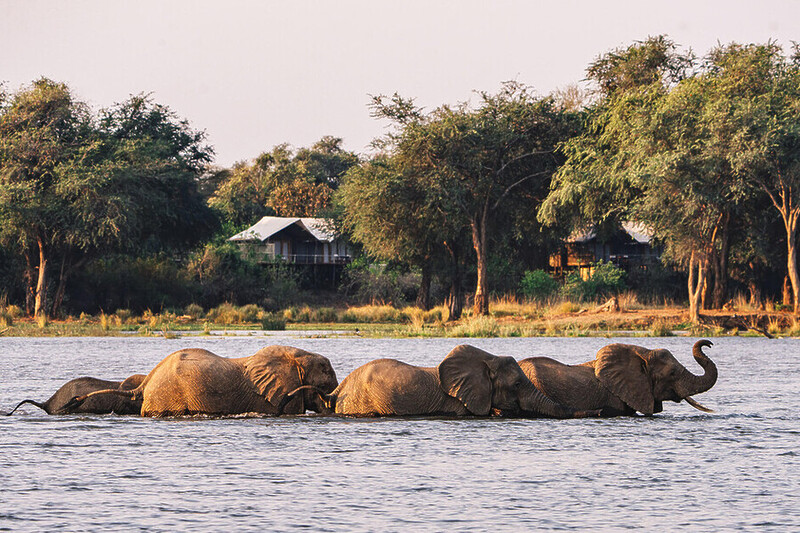
The Lower Zambezi National Park lies opposite Zimbabwe’s Mana Pools, forming part of a vast transfrontier ecosystem that protects more than 9,000km² of wilderness. This is a place that’s escaped overdevelopment; there are no crowds, no traffic, just the quiet sound of the river, the wildlife and the wind in the trees. The park stretches from the escarpment to the river, a patchwork of floodplain, woodland, and islands.
The wildlife here is as varied as the terrain; lion, leopard, buffalo, elephant, and large herds of waterbuck and impala share the space with carmine bee-eaters, kingfishers, and the occasional African skimmer gliding low over the water.
Dulini Anabezi sits at the eastern end of the park, along a stretch of river that’s renowned for an abundance of wildlife. The camp is classic Zambezi safari style, but with some contemporary touches. The rooms are canvas and timber suites, raised on wooden decks, each facing the river.
From your private veranda, it’s easy to get caught up in the views and lose track of time; watching elephants feeding, often just below your room, water birds wading in the shallows or hippos yawning in the river beyond. Inside, the rooms are spacious, the beds draped in mosquito nets, and with indoor and outdoor bathrooms – the outdoor ones, perfectly placed to take in those views.
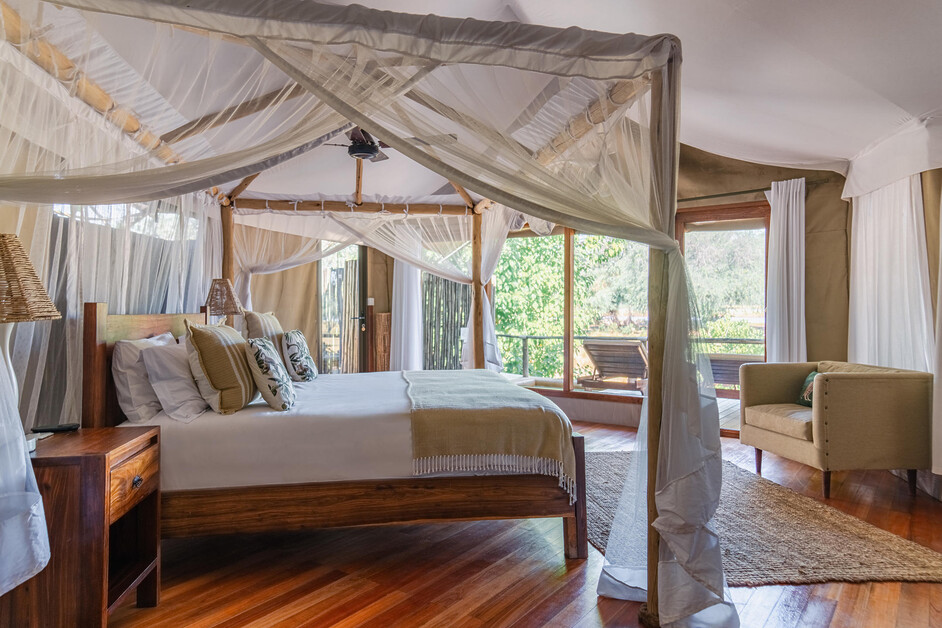
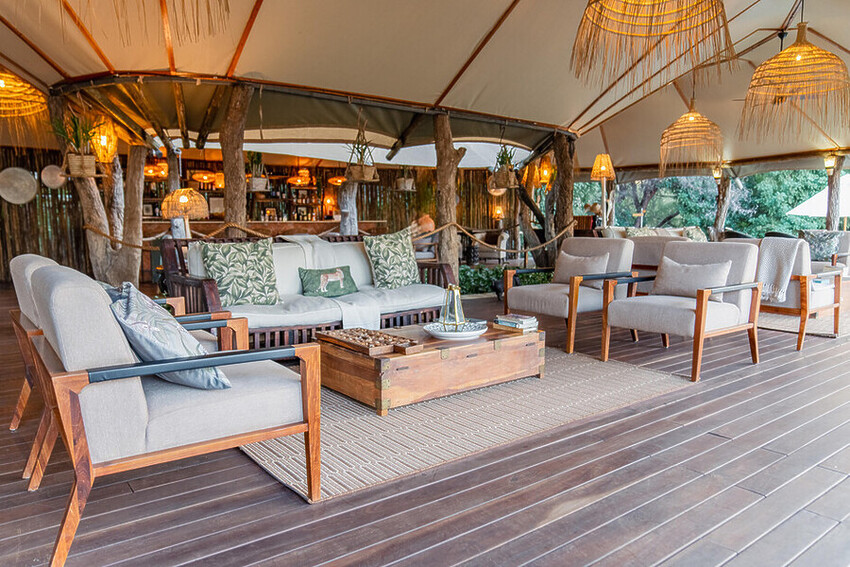
The typical day at Dulini Anabezi begins early, before the first rays of sunlight have even hit the river. You can have coffee delivered to your room, or like me, you can wait to head to the main deck area, where a light breakfast awaits. Then it’s off for a morning game drive, exploring the floodplains and woodlands, following the footprints of predators or pausing by a waterhole as the sun finally rises.
The guides here are some of the most knowledgeable in Zambia; knowledgeable, patient, observant, and in tune with the subtleties of the bush. On our first morning out, an impala’s alarm call, led us to a leopard resting high up in the branches of a sausage tree. For half an hour or more, we watched as it stretched and yawned, before eventually climbing down from the tree and melting into the long grass.
The middle of the day, when the temperatures were at their hottest, we spent in camp. Lunch, a plunge in our private pool and then a nap for my husband, while I sat out on our verandah with my binoculars, watching the endless array of birdlife. Goliath herons stood in the shallows hunting for fish and frogs to eat. Spoonbills waded through the water, their distinctive black spoon-shaped bills moving backwards and forwards under the water.
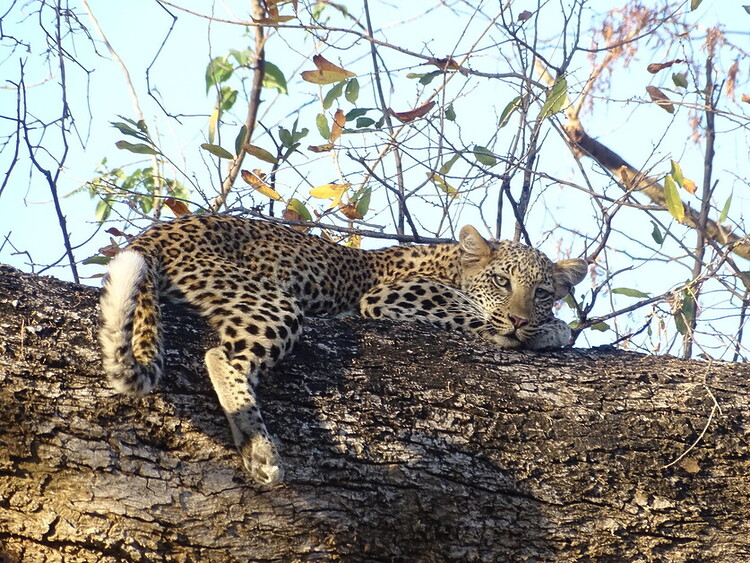
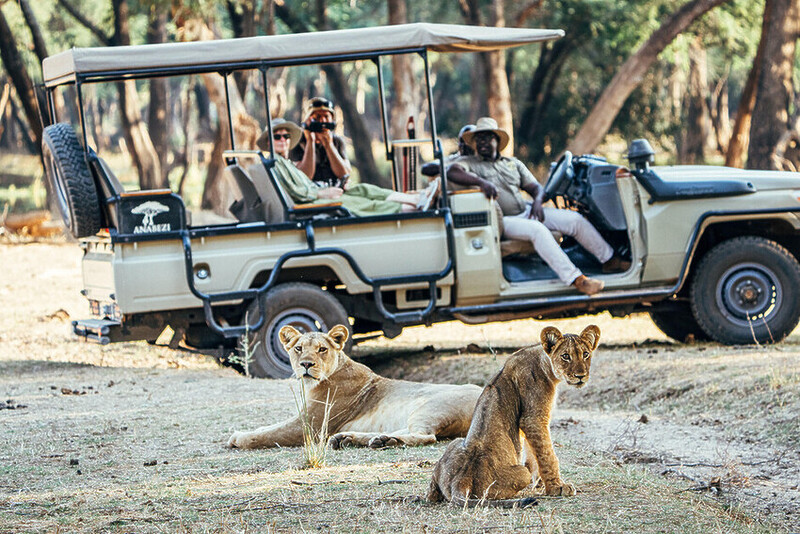
Weaver birds chattered in the trees, as the males wove new grass nests in an attempt to impress potential mates. And then my favourite of all, the Fish Eagle, Zambia’s national bird, let out his loud, piercing call, from the top of a nearby tree.
The Zambezi itself provides another dimension to the Dulini Anabezi experience. We set out on an afternoon boat trip, gliding along channels lined with reeds and fig trees, where crocodiles slipped silently underwater as we passed, and elephants crossed in single file, trunks raised like snorkels. My husband is a keen fisherman, and the river here is renowned for tiger fish, famous for their ferocity. As we reached the main river, the rods came out and the fishing began.
I am not a fisherman myself, so fortunately for me, the guides here handle all the details, from tackle to technique, leaving me free to focus on the fight and the moment. I didn’t fish for long, I put down my rod, leaving my husband to carry on, and instead, gin and tonic in hand, watched the ever changing river, and the sky turning crimson behind the escarpment as the day came to an end.
We returned to camp for a dinner by lantern light, out on the main deck, with tall winterthorn trees overhead and the eerie call of a hyena in the distance. Although an after diner drink by the campfire was appealing, we knew another early morning was on the cards the next day, so it seemed more sensible to head to bed.
When the morning did come, we opted to head out on foot. Walking safaris offer a different connection to the park and its wildlife. Moving quietly through the bush with your guide and an armed scout, guests learn to read tracks, identify birds, and notice the smaller details that you often miss from a vehicle.
We followed a leopard’s paw prints in the dust, examined the delicate architecture of a termite mound, and spent over an hour just walking through the bush in the cool morning air. There’s something special about being on foot here, it’s like you’re a part of the landscape rather than merely observing it from the back of a moving vehicle.
On our final evening drive, we stayed out till long after the sun had set, and drove back to camp as the air cooled and stars began to appear, one by one, in the sky. Night drives reveal yet another side of the park. The spotlight in our guides hand picked out the glint of eyes in the dark – a civet slipping through the grass, a hyena trotting down the track, a pair of lionesses beginning their nightly patrol. It’s amazing just how alive the bush becomes once the sun goes down.
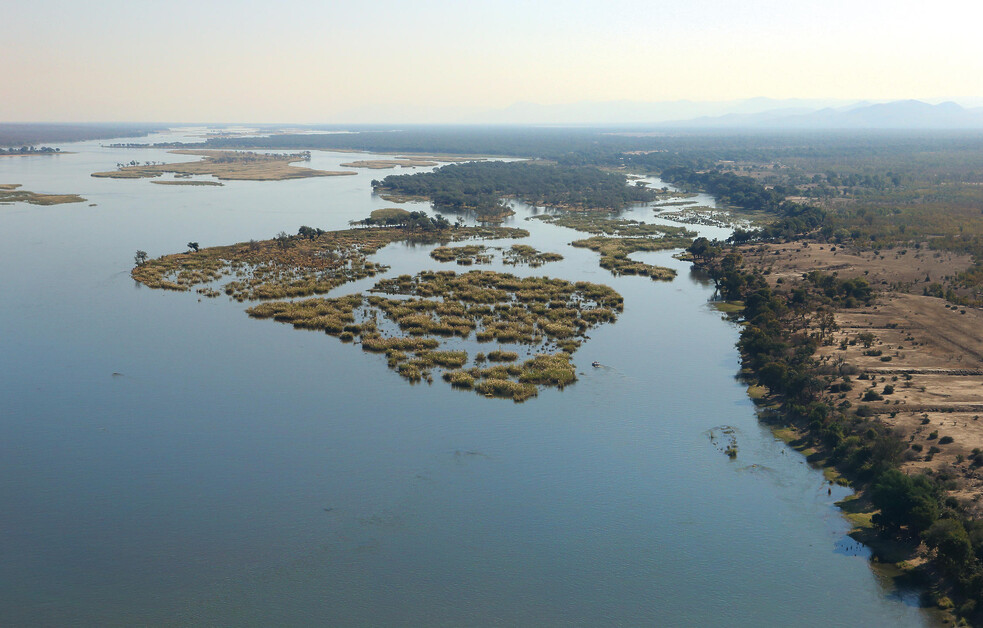

The Lower Zambezi’s magic lies in its subtle moments; a herd of waterbuck feeding in the dappled light of the forest, a lone buffalo wallowing in a waterhole, a Ground Hornbill striding across the landscape, the soft plop of a hippo disappearing underwater. Dulini Anabezi perfectly captures all this; the sights, sounds and smells, the essence of the African bush.
As our final game drive came to an end, and the call of a scops owl echoed from a nearby tree, it was easy to understand why people speak of the Lower Zambezi with such affection. This is a place where the wilderness still feels unbound, and Dulini Anabezi, with its blend of quiet luxury and deep connection to the environment, is the perfect way to experience this.
Tell me more about Dulini Anabezi
Dulini Anabezi, Lower Zambezi National Park, Zambia.
E: reservations@dulini.com T: +27 (0) 11 792 4927
Rates: LOW SEASON 01 April – 14 Jun £977/US$1,305
HIGH 15 June – 15 Oct 16 and Oct – 30 Nov £1,389/US$1,854
These rates are per person sharing and include accommodation, meals, drinks, activities, and transfers to and from the bush airstrip. They do not include the mandatory conservation fee (£75/$100 pppd) and domestic flights.

